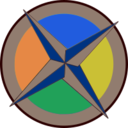Version FINAL
Lecture: The Mission Support System

Examining the atmosphere by research aircraft is a costly and highly collaborative effort involving a large community of scientists, their one-of-a-kind measurement instruments and a very limited amount of available flight-hours. The Mission Support System MSS enables the planning of optimal flight paths by visualising the results of model simulations in combination with the chosen flight path and allowing for a simple iterative and collaborative improvement process, enabling the best measurement flights possible.
The MSS Software is used for planning research aircraft missions. Such missions involve the measurement of interesting atmospheric situation by research aircraft. These missions typically involve a wide range of one-of-a-kind instruments designed and operated by different scientific institution, with different requirements and operational conditions.
To measure in the scientifically most interesting locations, it is necessary to have model forecasts of relevant quantities such as meteorological parameters, chemical composition or particle information to guide the aircraft to the location of interest.
The MSS software consists of two major components. One is formed by an extended OGC webmap server capable of visualising the big data generated by complex 3-D atmospheric simulations in a highly configurable manner and delivering the resulting small PNG images over the internet. The second one is a flight path editor that allows to overlay the figure produced by our server (or other OWs compliant services) with the flight path to identify regions of interest and change the plan accordingly. The split is necessary as the data is typically located in super-computing centers, while the scientist are often based in remote locations with poor internet-connections. Several special features are implemented in addition to this basic functionality, e.g. the ability to provide vertical cross-sections along the flight-path, which are ideal to assess the measurements that, e.g. a lidar would take.
Info
Day:
2019-08-10
Start time:
10:00
Duration:
01:00
Room:
HS6
Track:
FrOSCon meets Science
Language:
en
Links:
Feedback
Click here to let us know how you liked this event.
Concurrent Events
Speakers
| Reimar Bauer |